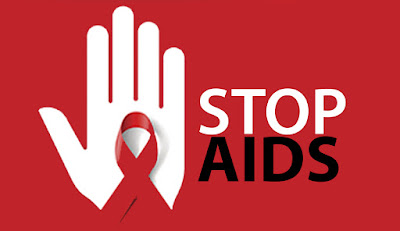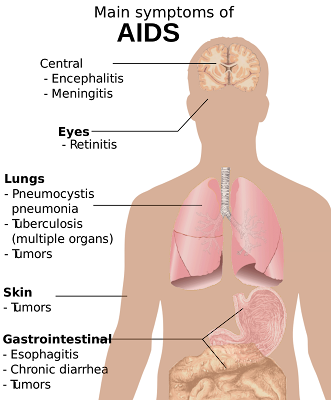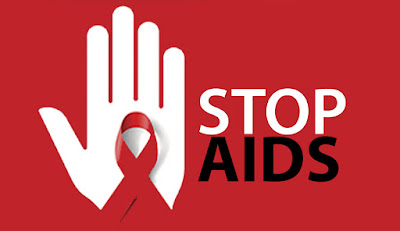 | |
|
About AIDS spreading in our
country and in the world in all segments of society, everyone should be aware
of in terms of awareness creation and community health. I did an interview
about this, Istanbul University, Medical Faculty, infectious diseases, faculty
member Prof. Dr. atahan cagatay Department of clinical Microbiology, “in the
world he was HIV-positive and knew that there are two groups who didn't know. I
received the results of the research when we look at Europe, 30% in the patient
still is HIV-positive is not aware that we see. Therefore, we advise you to
undergo tests in life for those who were found in risky behaviors. Today falls
into the category of chronic diseases, AIDS is not fatal, and there is a case
to be of concern in applying to health institutions,” he said.
Prof. Dr. Atahan Cagatay
divided my questions about AIDS, he spoke of the diagnosis and treatment
process of AIDS.
What is AIDS?
AIDS "Acquired Immune
Deficiency Virus" identified as the virus affects the immune system and
the form of the disease. “Syndrome” is defined as.
AIDS-related statistical
data in Turkey, how? Watching how the disease is likely to spread? There is a
special occasion for us when we compare it with the world?
If we were to reveal the
latest figures of AIDS cases in Turkey in the first 6 months of the year here
2015 9,300% of the occurrence is observed. As we have noted in recent years
that have approximately 1,700 to 2,000 new cases incidence. Turkey, close
geographical neighbors since ancient times, Muslim countries and the West in
comparison with low numbers of AIDS cases. Turkey, as the numerical ratio was
regarded as low compared to other countries. In Turkey, a massive campaign made
on this subject because of the lack of numeric AIDS patients. Recently, the
Ministry of health and the World Health Organization's database, an increase of
the patients examined. This increase is due to feature a splash of a
substantial increase in their scale, we can say that. In the world in the
struggle against this disease, the upward trend of the slope break, should
flatten. There are countries that are successful in places, but this is not the
case in Turkey yet. When we hit Turkey in recent years the percentage of
patients but it would not be wrong to say that Turkey is a significant increase
compared with other countries, intensive patient population that we have we
can't tell you.
How is it spread?
AIDS, shows the transmission
profile varying from country to country. In Turkey, there is a table of sexual
transmission and 90% are sexually transmitted. Substance abuse is the second
one. Injector common use, depending on the transmitted virus in America
represent a large patient group in Europe. Apart from this, if the mother is not
aware of it, if you didn't receive the appropriate treatment and is aware of,
and if the new domain is aware of and has not had time to start treatment can
be passed from mother to infant. Some HIV-positive patients unless carefully
screened HIV-negative patients, organ transplant disease could be in some
cases, where it is even possible. It is necessary to contact the AIDS virus in
blood. Blood transfusion is also an important transmission mechanism. Scan
because of blood in blood banks the risk of this kind is quite low. HIV health
care workers contact with blood, body fluids, may be transmitted to patients
through the use of surgical interventions.
How can individuals be
protected? What should be considered?
The patient's profile in
Turkey from the perspective of individuals, should be warned to be sexually
transmitted disease. In this regard, it is recommended to use condoms when
entering into relationships or monogamy. In terms of sexual monogamy and condom
use is an effective method to prevent HIV transmission. It was scanned for
blood bank need to take precautions. HIV-positive relatives of individuals with
HIV - positive while in contact with blood and body fluids of people who are
required to pay attention. With substance abuse is not an approved behavior,
but viewed as a disease, the public must be careful to use the injector, and
should not be used.
What are the symptoms of HIV
infection? How soon symptoms start to appear?
The HIV virus, all viruses
and micro-organisms, such as certain incubation period experiences. We will
take a look during the incubation period. The virus has an incubation period of
more than a week prolonged periods. After this incubation period, the antigen
appears in the body, and the target moves to certain organs, lymph glands,
blood cells, keeping blood cells with a tendency to reduce them like in this
area by acting on some cells and to the increase of reaction occurs. During
this period, the people themselves can feel like you're having a simple viral
infection. Vbg flu. tables can also be observed. The person may be sore throat,
have a fever, lymph glands, fatigue, swollen may be because I got the flu and
the doctor can go. The requirement to conduct additional due diligence on this
subject, the doctor may not hear about, and that person, this table flu-like
sickness, he'll get over it. Disease, received the density of the Virus, virus
load, and depending on the resistance of the person, may enter a latent period.
This latent period may be extended up to 10 years to show itself by giving
slight symptoms after a few months or may remain silent or fail-over. The virus
is removed 2 - 3 weeks after the incubation period, the viral infection
symptoms may make. In the next process, may show itself with symptoms to
adjacent organs.
Suspected HIV infection on
individuals, where can I apply?
HIV infection is a chronic
infectious disease, infectious diseases specialists in each country are
requested to contact patients in each condition. After applying to all the
hospitals, primarily with infectious diseases specialists to do a review the
heart can switch to a higher connection.
Upon application of the
health institutions How does the process work?
The first story is taken
from the patient and tests are required. Those tests are testing for the HIV
virus. These tests are “screening test”. The validation test is performed and
then the patient is diagnosed. To be noted here is the patient non-specific to
the doctor with complaints may apply. No one “HIV” infection in case I have it does
not refer to a physician. The patient I am losing weight, I cough, because I am
a patient of jaundice. An HIV test by asking the patient to accompany the
clinical picture of the HIV virus that leads to the diagnosis. Sometimes
patients may be in advanced stages.
All laws intended to protect
patient rights. Now some physicians in patient data from the system is visible.
Physicians must make reference to patients, without having to worry about this.
Therefore, the patient rights of the patient it is not possible for any data to
be shared under any circumstances.
AIDS testing can be done at
home what do you think about that?
I'm not positive about these
tests. The results of the test with direct patient is facing. These tests are
very simple implemented. Taking blood from patient's finger, the kit gives
positive or negative result as there is in putting it on. People like this will
not be known to learn on your own current psychological status of a chronic
disease because it may lead to a situation objectionable. In such cases, the
patient should consult a physician. The only physicians may not be enough in
some cases, accompanied by a diagnosis of the patient is shared with a
psychiatrist or psychologist. These tests are 85%, 90% sensitivity. So, 10% of
these patients, 15% may show a false positive. People might think you're sick
when not sick. This type of made at home as it carries risks, I don't find
these tests useful. Must apply to a health institution that needs to be done.
What is the treatment process?
We used antiretroviral drugs
we call HIV in Turkey. Antiretroviral drugs, pharmacological as six different
classes are defined. In our country these drugs, diagnosis, and patient is paid
by the state after the report came out. In the world of HIV-related treatment
will be given when certain clinical and laboratory indicators are defined.
Recently, the Ministry of Health regarding the treatment of these patients
especially for patients it is important that the guides prepared for the US
DHHS. The DHHS AIDS-related manual “where you see patients treat advised.
European AIDS has started a trend in this direction in the manual and in the
near future this guide, “where you see and treat” approach that I'm guessing
will defend. Physicians are unable to recognize a part of in Turkey for about a
year from the moment patients are treated. Me I'm in this group. Some
laboratory and clinical parameters in the case of the formation of some other
part, the treatment in the proposal.
The individual, the
provision of immediate and early treatment, rest, many of the patients who
receive early treatment rare complications associated with AIDS and AIDS more
independent and show more successful results from the treatment.
Does this differ according
to the person?
Illustrates the treatment
process changes according to the person. We can't say no because it's a side
effect. This has the side effect of each drug. These side effects divided into
long term and short term. Short-term side effects, measures, quickly recovering
from the patient to prepare and we are with predictions. This is a measure to
prevent patients to stop treatment. Of leaving treatment early due to side
effects a very low percentage. Of course, in the long run can have side
effects. For example; There are medications that will increase the rates of
heart disease for an elderly patient. These drugs are given to patients in this
risk group, you need to remain. We are supplying drugs from pregnant women as
separate groups. On the basis of the patient are evaluated separately for each
drug treatment option and accordingly is being created.
During the treatment, so how
does that affect a person's daily life? The cure will affect what should be
avoided?
Treatment seems to make a
difference in a person's life over a period we can say that. Even compared with
the ancient period, we can talk about increasing the quality of life. In
Turkey, the first AIDS treatment started in the period when the patient was
being treated with the burden of the tablet is quite a high number.
Konforsuzluk this in a serious sense. A reduction in the quality of life, even
more storage issues like I had the disease. Today, the application of single or
two tabletli regime has evolved into. These are numerous medications which can
be used. The following questions are being asked of us by patients; Once a
week, even alcohol can we have? Can we smoke?
In some cases, these could
be released, but abroad are alcohol-free are used in countries where
HIV-positive is an individual who is required to be completely removed alcohol
from your life. For this reason, alcohol and cigarettes is not taken, it is
necessary to reduce any additional diseases that appear to be seen. Other
nutrients that must be considered. Certain drugs used in HIV treatment, certain
foods and certain calories in a regime needs to be taken. In addition to
treating patients with food or on an empty stomach you should take to take we
tell you the nutrients you need.
The conditions of treatment
in Turkey how? HIV-infected person what is the involvement of the state in the
treatment of in the treatment?
The treatment of this
disease in Turkey is paid entirely by the state. HIV drugs recommended in the
guide accepted by a significant part of the whole world in our country. It is
also found in new medicines. The state, all of these drugs, the patient's
report came out when it meets. Some difficult and resistant cases of Turkish
pharmacists ' Association and Ministry of Health correspondence with the
Department of Medicine by bringing medicines, preparing pharmaceutical forms we
use, and the state is paying for it.
What are the new
developments that are related to the treatment process?
There are new treatments in
the field of Medicine. Despite advances in treatment, the number a single
tablet of the drug contains one molecule of the drugs that fall into it doesn't
mean that. In these, two, three, four drug can contain. Technology now offers
us the drugs combined. A single tablet medications, drugs that are less
weakness in terms of the interaction with other factors. Therefore, these drugs
are prepared technologically and that we can say that we have started using it
on our patients.
AIDS is not fatal, and chronic disease!
Unknown


